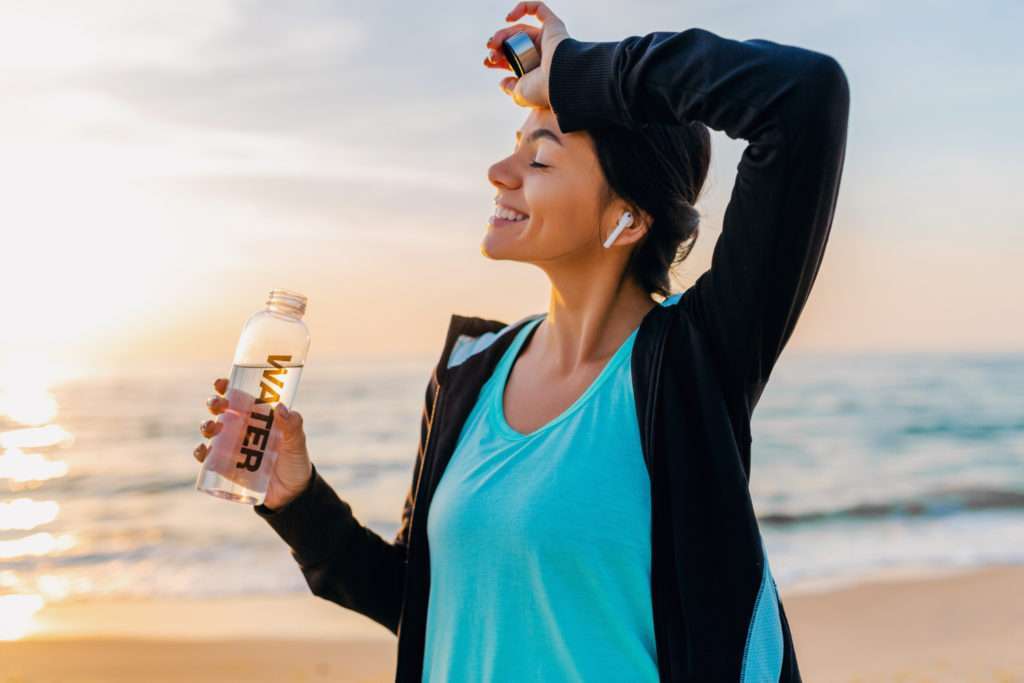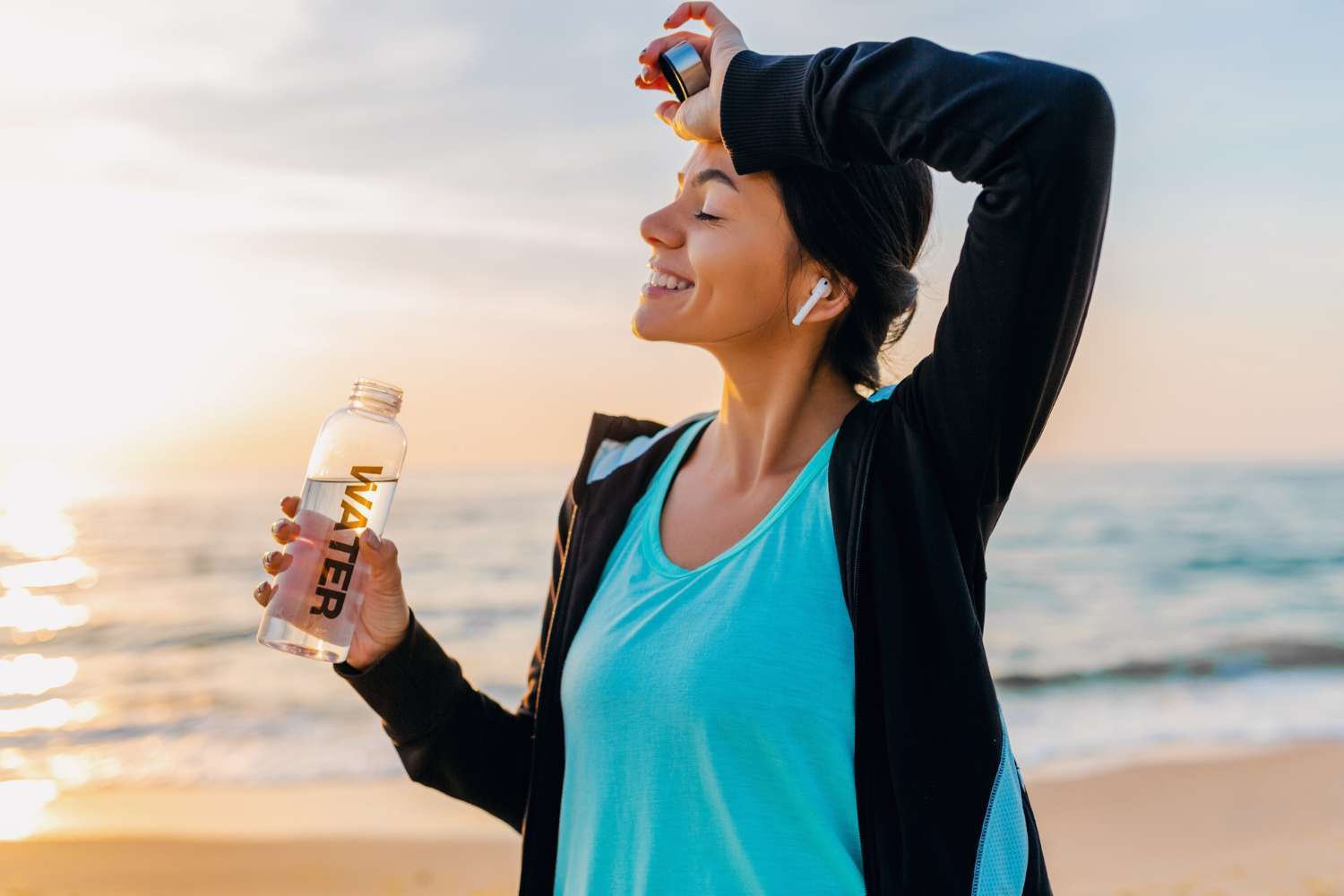I. Introduction: Sunshine – More Than Just a Beach Day
Ah, sunshine! There’s a reason our spirits lift when those warm rays kiss our skin. The feeling of basking in the sun’s glow is pure bliss – it’s no wonder we flock to beaches and parks when the skies clear. But hold on, there’s more to sunshine than that perfect tan (although, let’s be honest, a healthy glow never hurt anyone!). Sure, “Sun’s Out, Buns Out” might be a catchy phrase, but the real benefits of sunlight go way beyond a beach bod. We’re talking about a boost to your physical and mental well-being that’s as powerful as it is natural. So, ditch the tanning oil for a sec and get ready to dive into the surprising ways sunshine can actually improve your health.

Let’s break it down. Sunlight isn’t just a source of warmth and light; it’s a powerhouse of invisible energy that interacts with our bodies in profound ways. By harnessing this energy, we unlock a hidden treasure trove of health benefits that can leave you feeling energized, happy, and ready to conquer the day.
II. Vitamin D Powerhouse: Sunshine’s Secret Weapon
One of the most crucial benefits of sunshine lies in its ability to trigger vitamin D production within our bodies. Here’s the science behind the magic: nestled within our skin cells is a molecule called 7-dehydrocholesterol. When exposed to sunlight, specifically ultraviolet B (UVB) rays, this molecule undergoes a fascinating transformation. The UVB rays act like a key, unlocking the potential of 7-dehydrocholesterol and converting it into previtamin D3. This previtamin then undergoes a final change in the body, thanks to body temperature, to become the active form of vitamin D – the sunshine vitamin itself!
Now, why is vitamin D such a big deal? Think of it as a multi-talented superhero for your health. One of its primary roles is to ensure strong bones. Vitamin D plays a crucial role in calcium absorption, the mineral that gives our bones their structure and strength. Without enough vitamin D, calcium struggles to be absorbed from our food, leaving bones weak and susceptible to fractures.
But vitamin D’s benefits extend far beyond the skeletal system. This essential vitamin also acts as a key player in our immune system. It helps regulate the production of white blood cells, the body’s soldiers that fight off infection. Studies have shown that sufficient vitamin D levels can reduce the risk of developing colds and flu, and may even offer some protection against autoimmune diseases.
There’s more! Vitamin D also plays a surprising role in mood regulation. Research suggests low vitamin D levels might be linked to symptoms of depression and seasonal affective disorder (SAD). Sunlight exposure, through vitamin D production, can help increase serotonin levels, a neurotransmitter associated with feelings of happiness and well-being.
Now, what if you live in a climate where sunshine is scarce, or if spending extended time outdoors isn’t always an option? Don’t worry, there are ways to ensure you get your daily dose of vitamin D. Fatty fish like salmon and tuna are excellent dietary sources. Fortified foods, such as milk and some cereals, can also contribute. Additionally, vitamin D supplements are readily available and can be a great way to maintain healthy levels, especially during winter months.
However, remember that sunlight remains a natural and efficient way to boost your vitamin D stores. By incorporating safe sun exposure into your daily routine, you’re not just soaking up the sun’s warmth, you’re fueling your body with a vital nutrient that benefits your bones, immune system, and even your mood. In the next section, we’ll explore how sunshine goes beyond vitamin D to directly impact your mental well-being.
III. Sunshine and Mood Boost: Chasing Away the Blues
Ever feel sluggish and unmotivated when the days grow shorter and skies turn gray? You’re not alone. Many people experience a dip in mood during the winter months, a phenomenon known as seasonal affective disorder (SAD). But here’s a surprising fact: sunshine can be a powerful weapon in the fight against SAD and a natural mood booster all year round.

The secret lies once again in the way sunlight interacts with our brain chemistry. Remember vitamin D, the sunshine vitamin we discussed earlier? Well, turns out, it’s not just about bones and immunity. Studies suggest that vitamin D may also play a role in regulating serotonin levels. Serotonin, often referred to as the “feel-good” hormone, is a neurotransmitter that helps regulate mood, sleep patterns, and appetite. When serotonin levels drop, feelings of sadness, fatigue, and low motivation can creep in. Sunlight exposure, through vitamin D production, can help increase serotonin production, naturally combating these feelings and promoting a more positive outlook.
But it’s not just about vitamin D. Sunlight itself has a direct impact on our brain’s internal clock, also known as the circadian rhythm. This rhythm regulates our sleep-wake cycle, energy levels, and hormone production. When exposed to sunlight, especially in the morning, our bodies receive a signal that it’s daytime. This helps regulate the production of melatonin, a hormone that promotes sleepiness. With proper sun exposure, melatonin production is suppressed during the day, leading to increased alertness and improved energy levels. Conversely, a lack of sunlight can disrupt our circadian rhythm, leading to feelings of fatigue and difficulty sleeping, both of which can negatively impact mood.
So, how can you harness the mood-boosting power of sunshine? Here are a few tips to incorporate safe sun exposure into your daily routine:
- Embrace the Morning Light: Aim for at least 15-30 minutes of sunlight exposure within the first hour of waking up. Open your curtains, take a walk, or enjoy breakfast on a sunny patio.
- Lighten Up Your Workspace: If your work environment lacks natural light, consider rearranging your desk or workspace to face a window. Take short breaks outside throughout the day, even if it’s just a few minutes.
- Lunchtime Sun Strolls: Make a conscious effort to get outside during your lunch break. Take a brisk walk, chat with a colleague on a park bench, or simply sit in a sunny spot and soak up the rays (safely, of course!).
- Weekend Sun Seekers: Plan outdoor activities for your weekends. Go for a hike, bike ride, or have a picnic in the park. Even spending time gardening or doing yard work can provide that much-needed dose of sunshine.
Remember, consistency is key! Aim for regular sun exposure throughout the week, even if it’s just for short periods. By incorporating these simple tips, you can harness the mood-boosting power of sunshine and combat the winter blues naturally. Just be sure to practice sun safety by using sunscreen with SPF 30 or higher, wearing protective clothing, and seeking shade during peak sun hours.
In the next section, we’ll discuss the importance of sun safety and how to enjoy the benefits of sunshine responsibly.
IV. Sun Safety is Key: Striking the Perfect Balance
We’ve explored the amazing benefits of sunshine, from its role in vitamin D production to its mood-boosting power. But before you grab your swimsuit and head straight for the tanning bed (hold on!), it’s crucial to remember that sun safety is paramount. While sunshine offers a wealth of health advantages, excessive sun exposure can be detrimental.
Here’s the reality: the sun emits ultraviolet (UV) radiation, which comes in two main forms – UVA and UVB rays. While both contribute to suntans, they have different effects on the skin. UVA rays penetrate deep into the skin’s layers, causing premature aging and wrinkles. UVB rays are responsible for sunburns, which can be not only painful but also increase the risk of skin cancer.
So, how can you enjoy the benefits of sunshine while protecting your skin? Here’s where sun safety measures come in:
- Sunscreen – Your Best Friend: Sunscreen is your first line of defense against harmful UV rays. Choose a broad-spectrum sunscreen with SPF 30 or higher, which will block both UVA and UVB rays. Apply sunscreen generously to all exposed skin at least 15 minutes before heading outdoors, and reapply every two hours, or more frequently if you’re sweating or swimming. Don’t forget those often-missed areas like your ears, lips, tops of your feet, and the back of your neck.
- Clothing for Sun Protection: Clothing can be a fantastic ally in your sun safety arsenal. Opt for loose-fitting, long-sleeved shirts and pants made from tightly woven fabrics that offer better protection against UV rays. Darker colors tend to offer more protection than lighter ones. Consider sun-protective clothing with a UPF (Ultraviolet Protection Factor) rating, which indicates the level of protection against UV rays similar to SPF for sunscreen.
- Hats are Hot (Literally and Figuratively): A wide-brimmed hat is an essential sun safety tool. It shields your face, neck, ears, and scalp, all areas particularly susceptible to sun damage. Look for hats made from tightly woven materials like straw or fabric. Don’t underestimate the power of sunglasses either! Choose sunglasses that block UVA and UVB rays to protect your eyes from sun damage, which can lead to cataracts and other eye issues.
- Seek Shade and Time Your Sun Exposure: Remember, you can still enjoy the outdoors without turning into a lobster. Seek shade whenever possible, especially during peak sun hours (typically 10 am to 4 pm). Plan your outdoor activities accordingly, or pack an umbrella to create your own shade haven.
Responsible sunbathing isn’t about avoiding the sun altogether; it’s about striking the perfect balance. By incorporating these sun safety tips into your routine, you can safely enjoy the health benefits of sunshine without putting your skin at risk.
Think of it this way: a healthy tan fades, but the damage from unprotected sun exposure can last a lifetime. So, embrace the sunshine, but do so responsibly. In the next section, we’ll wrap up with some final thoughts and leave you with some helpful resources to stay sun-safe all year round.
V. Conclusion: Embrace the Sunshine, Embrace a Healthier You
So, there you have it! Sunshine is much more than just a source of warmth and light. It’s a natural health booster, offering a treasure trove of benefits for your body and mind. We’ve explored how sunlight triggers vitamin D production, crucial for strong bones, immune function, and even mood regulation. We delved into the power of sunshine to combat the winter blues by increasing serotonin levels and promoting a more positive outlook.
Remember, the key lies in striking a balance. With a little sun safety know-how, you can harness the sunshine’s power without putting your skin at risk. Apply sunscreen liberally, seek shade during peak sun hours, and don’t underestimate the protective power of clothing and hats.
By incorporating safe sun exposure into your daily routine, you’re not just soaking up the sun’s warmth; you’re investing in your overall well-being. So, step outside, feel the sun’s gentle kiss on your skin, and reap the health rewards that nature has to offer. Remember, sunshine is more than just a part of the weather; it’s a potent tool for a healthier, happier you!
